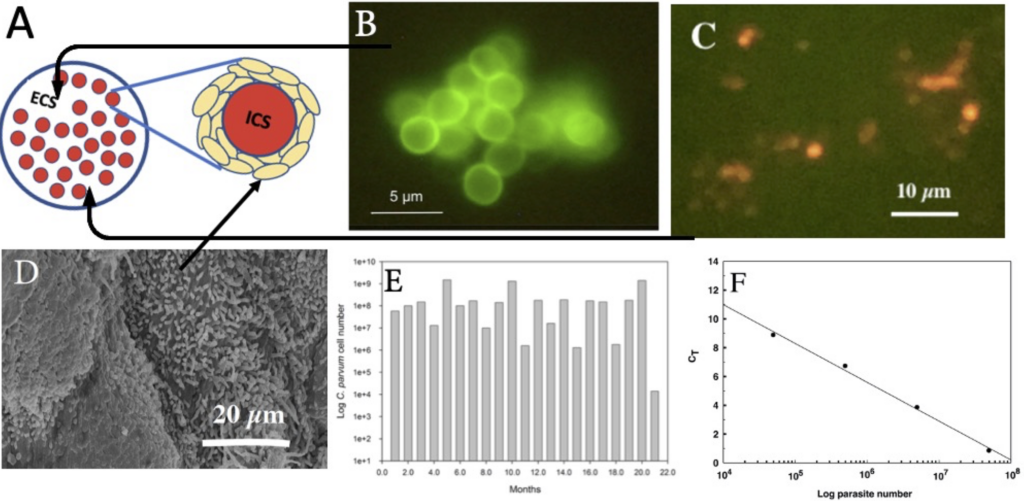Genomic and virulence analysis of in vitro cultured Cryptosporidium parvum

Recent advances in the in vitro cultivation of Cryptosporidium parvum using hollow fiber bioreactor technology (HFB) have permitted continuous growth of parasites that complete all life cycle stages. The method provides access to all stages of the parasite and provides a method for non-animal production of oocysts for use in clinical trials. Here we examined the effect of long-term (>20 months) in vitro culture on virulence-factors, genome conservation, and in vivo pathogenicity of the host by in vitro cultured parasites. We find low-level sequence variation that is consistent with that observed in calf-passaged parasites. Further using a calf model infection, oocysts obtained from the HFB caused diarrhea of the same volume, duration and oocyst shedding intensity as in vivo passaged parasites.
Nigel Yarlett, Mary Morada, Deborah A Schaefer, Kevin Ackman, Elizabeth Carranza, Rodrigo de Paula Baptista, Michael W Riggs, Jessica Kissinger. PLoS Pathog. 2024 Feb 28;20(2):e1011992. doi: 10.1371/journal.ppat.1011992.
